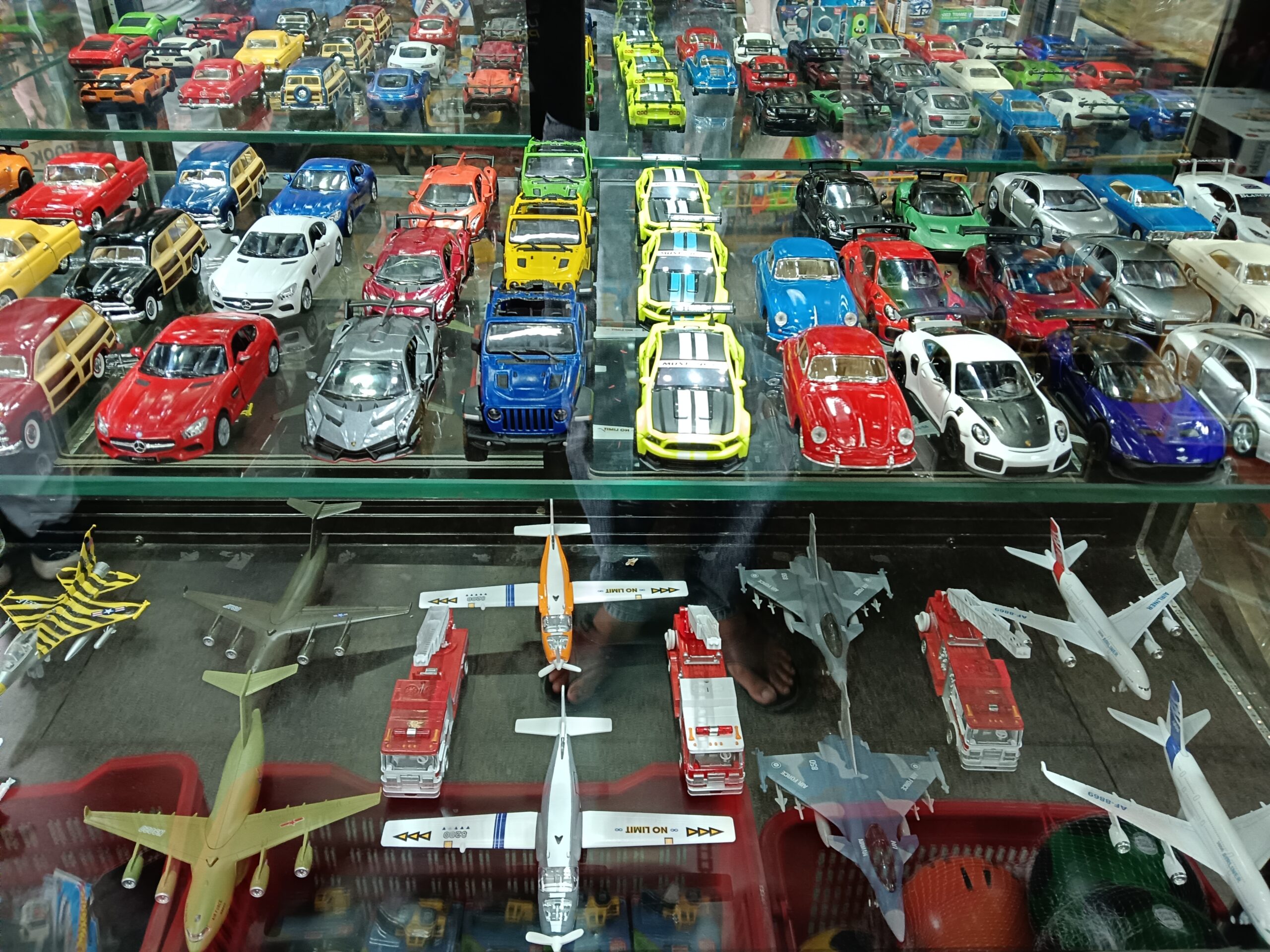It’s a quiet Friday evening. A group of students, all in their early twenties, are making plans for a birthday celebration in a corner of Connaught Place’s Block D.
“Let’s buy a toy for you,” one of them says. “No, let’s go to the movies,” another replies.
After thoughtful planning, they finally reach a decision: first, visit the neighbouring shop to buy a toy and then head for the cinema.
Meanwhile, a woman with Google Maps opened in her phone searches for something specific. She looks up and enters the shop that reads: “Ram Chander and Sons, India’s Oldest Toy Store, Since 1890”.
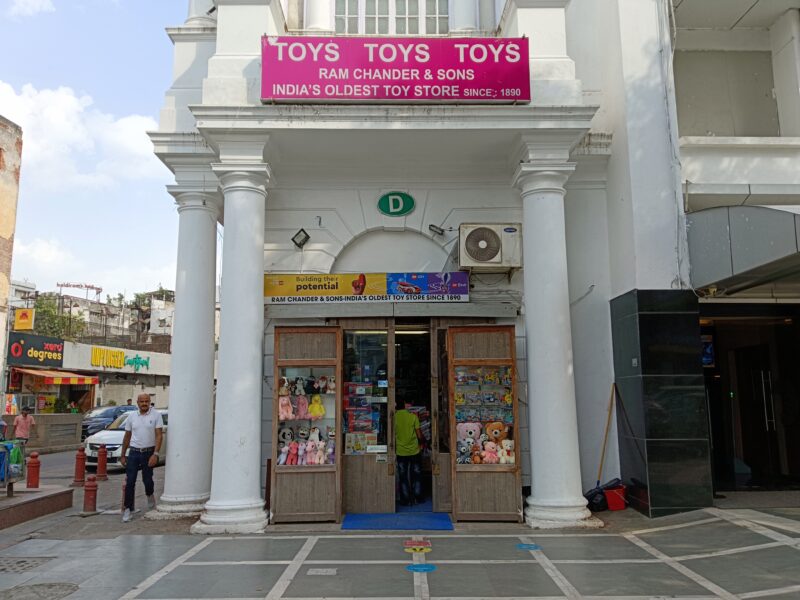
A kid, who is selling balloons, peers into the shop through the half-closed door the woman has left behind her.
Inside the shop, owner Satish Sundra is ever busy, juggling paperwork with customers.
“The sale is for tomorrow, not for yesterday,” Sundra proudly quotes one of the lessons his father taught him, which, he goes on to say, is the ‘tradition’ of the shop.
“Our customers can browse here for two hours, or maybe three hours, and they will not be made to feel pressured to buy a toy,” he says.
“This makes the place special. If a child breaks a toy in the shop, we don’t charge any money.”
The interiors of the shop still wear the look of an old store, unlike the Odeon cinema beside it which has been turned into a multiplex. “Customers from all over the world come to see my shop. It is because they have not seen an old toy shop where everything is the same as it was way back in 1935. I don’t make any changes in my shop. They feel happy to see the old values of the oldest toy shop,” Sundra says.
Oldest toy shopkeeper in the Capital?
“Not just the shop, probably the oldest shopkeeper in the city,” says Sundra, who is 87 now. “I don’t think you have any shopkeepers this old selling toys here.”
Sundra’s father, Raj Sundra, had established the shop in CP.
Raj Sundra grew up in Ambala Cantonment, where his grandfather, Seth Chunnilal, a Marwari migrant from Rajasthan, established a toy shop in 1890. “In 1925, my father set up the second branch in Kasauli. And in 1935, the Delhi branch was set up by him,” he says. The two old branches at Ambala and Kasauli were shut down when the family relocated to Delhi.
Slowly, the shop created a name for itself and became synonymous with magic and wonder. Children from British families and Indian royalty, would visit the shop and treat the owners like a family.
Sundra says that they have customers here from five generations and all of them have felt a certain sense of intimacy with the shop.
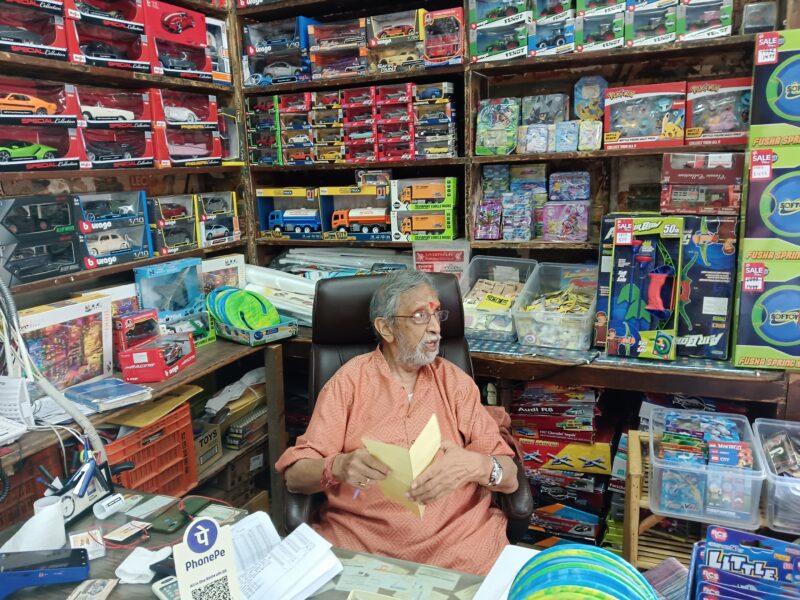
“If I am not here for a few days, they ask me where I have been and how I was,” he says.
The toy shop had regular highprofile customers such as Indira Gandhi, Rajiv Gandhi and the royalty of Pataudi, Faridkot, Baroda, and Jaipur, including the likes of Sharmila Tagore and Maharani Gayatri Devi.
“We were able to build a very fantastic reputation and this shop became very popular with all the royalty that we had. Britishers loved our shops and patronised them,” Sundra says.
However, after partition of India, the Britishers started to leave for Europe slowly and the Indian royalty began to diminish.
New powers take the market
“In the meantime, the government imposed a ban on imports to promote the Indian market,” Sundra adds.
In the world market of toys, the products of Europe and America began lagging after new powers, first Japan and then China, emerged.
“In 1955-56, Japan started producing excellent toys. However, when Japan realised that the price of land used to manufacture toys is very expensive, they switched to high-tech products. Consequently, Taiwan emerged – with Chinese influence.”
By the time India lifted its ban on imports in 1984 with few limitations, the market of toys had changed completely. China had become a chief exporter of toys, and would research on different themes in the toy industry prevailing in Europe and America.
“We also started to import from China,” Sundra says. “We established a special friendship with a factory there. It would exclusively produce toys for us.”
Apart from toys and the ‘high intelligence’ of Chinese industry to understand Indian buyers, what also intrigued Sundra were the statues of Hindu idols that China produced.
He was particularly fascinated by the “attractive job” on these statues, one of which is still in his temple at home.
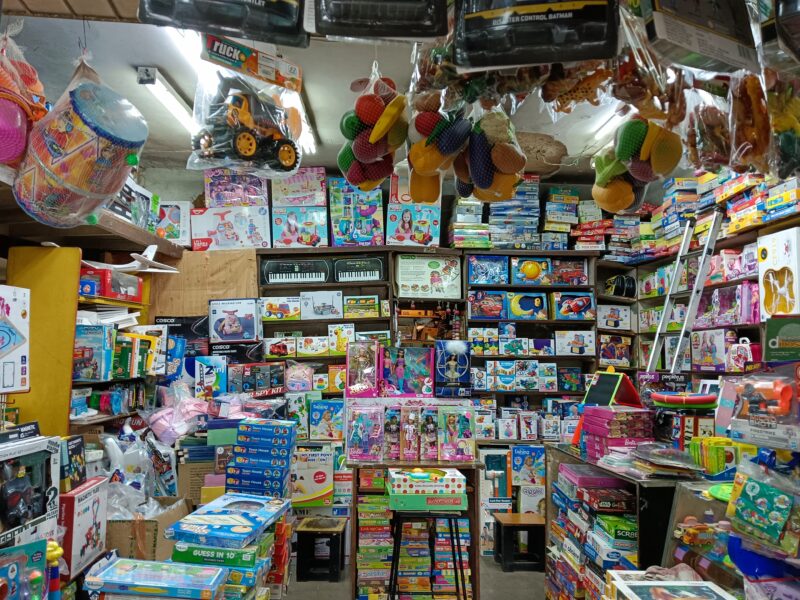
Over the years, the shop has quietly witnessed the history of India as it passes. However, what actually hit the shop hardest was the emergence of e-commerce.
Sundra informed that they have had around 30-35% of decline in sales due to the emergence of online shopping portals such as Amazon and Flipkart.
“We can’t compete with that,” Sundra says.
The customers, he explains, often take pictures of the toys and search them online for price. They then bargain with the Sundras.
“Wo to mere ghar bhi nahin pasta (It’s not even the price we buy the products for).”
However, this is not the aspect of online shopping that saddens Sundra.
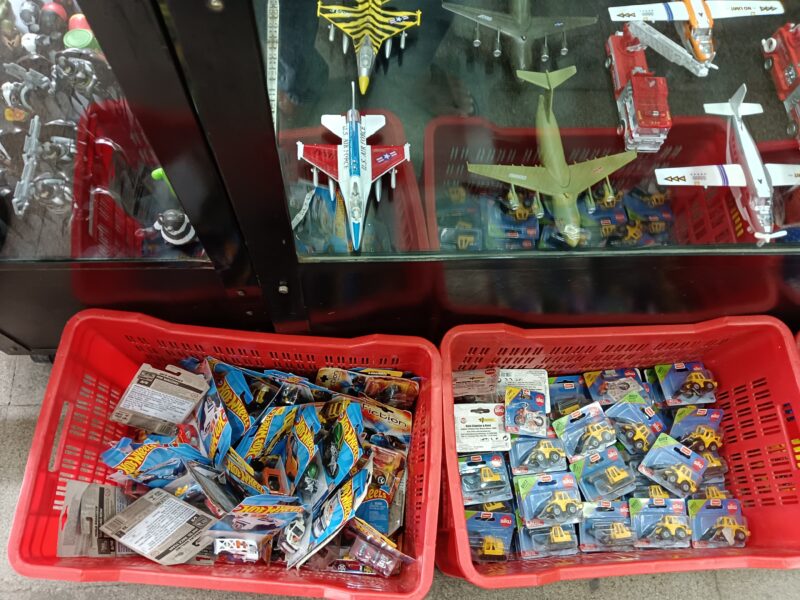
“There is a certain kind of warmth and intimacy when you go to a shop. With online shopping, it has been lost. In my shop, people are coming for five generations,” he says.
“People who come here, their fathers have shopped from me; their grandfathers from my father… My customers are a big family now,” he asserts.

